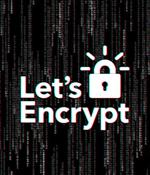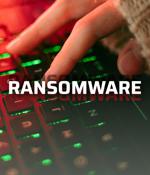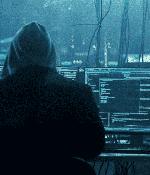Security News

A new ransomware operation called Cactus has been exploiting vulnerabilities in VPN appliances for initial access to networks of "Large commercial entities." What sets Cactus apart from other operations is the use of encryption to protect the ransomware binary.

Threat actors linked to the IceFire ransomware operation now actively target Linux systems worldwide with a new dedicated encryptor. IceFire operators exploit a deserialization vulnerability in the IBM Aspera Faspex file-sharing software to hack into targets' vulnerable systems and deploy their ransomware payloads.

Internet Security Research Group (ISRG), the nonprofit behind Let's Encrypt, says the open certificate authority (CA) has issued its three billionth certificate this year. [...]

The new 'AXLocker' ransomware family is not only encrypting victims' files and demanding a ransom payment but also stealing the Discord accounts of infected users. When a user logs into Discord with their credentials, the platform sends back a user authentication token saved on the computer.

The new 'AXLocker' ransomware family is not only encrypting victims' files and demanding a ransom payment but also stealing the Discord accounts of infected users. As Discord has become the community of choice for NFT platforms and cryptocurrency groups, stealing a moderator token or other verified community member could allow threat actors to conduct scams and steal funds.

Ransomware gangs are planning on trying out a new tactic, and it involves the destruction of the victims' data."There is no mechanism for removing files from the corruption queue, meaning that some files may be overwritten numerous times before the program terminates, while others may never have been selected," he explained.

Microsoft says an Iranian state-sponsored threat group it tracks as DEV-0270 has been abusing the BitLocker Windows feature in attacks to encrypt victims' systems. This aligns with Microsoft's findings that DEV-0270 uses BitLocker, a data protection feature that provides full volume encryption on devices running Windows 10, Windows 11, or Windows Server 2016 and above.

I'm devastated to report that Peter Eckersley [], one of the original founders of Let's Encrypt, died earlier this evening [2022-09-02] at CPMC Davies Hospital in San Francisco. Peter was the leader of EFF's contributions to Let's Encrypt and ACME over the course of several years during which these technologies turned from a wild idea into an important part of Internet infrastructure.

The best option is to use a method to encrypt your outgoing emails to protect them against compromise. If you send a secure email to someone who doesn't have a Sendinc account, that person is prompted to set one up in order to read your email.

The SOVA Android banking trojan continues to evolve with new features, code improvements, and the addition of a new ransomware feature that encrypts files on mobile devices. With the latest release, the SOVA malware now targets over 200 banking, cryptocurrency exchange, and digital wallet applications, attempting to steal sensitive user data and cookies from them.